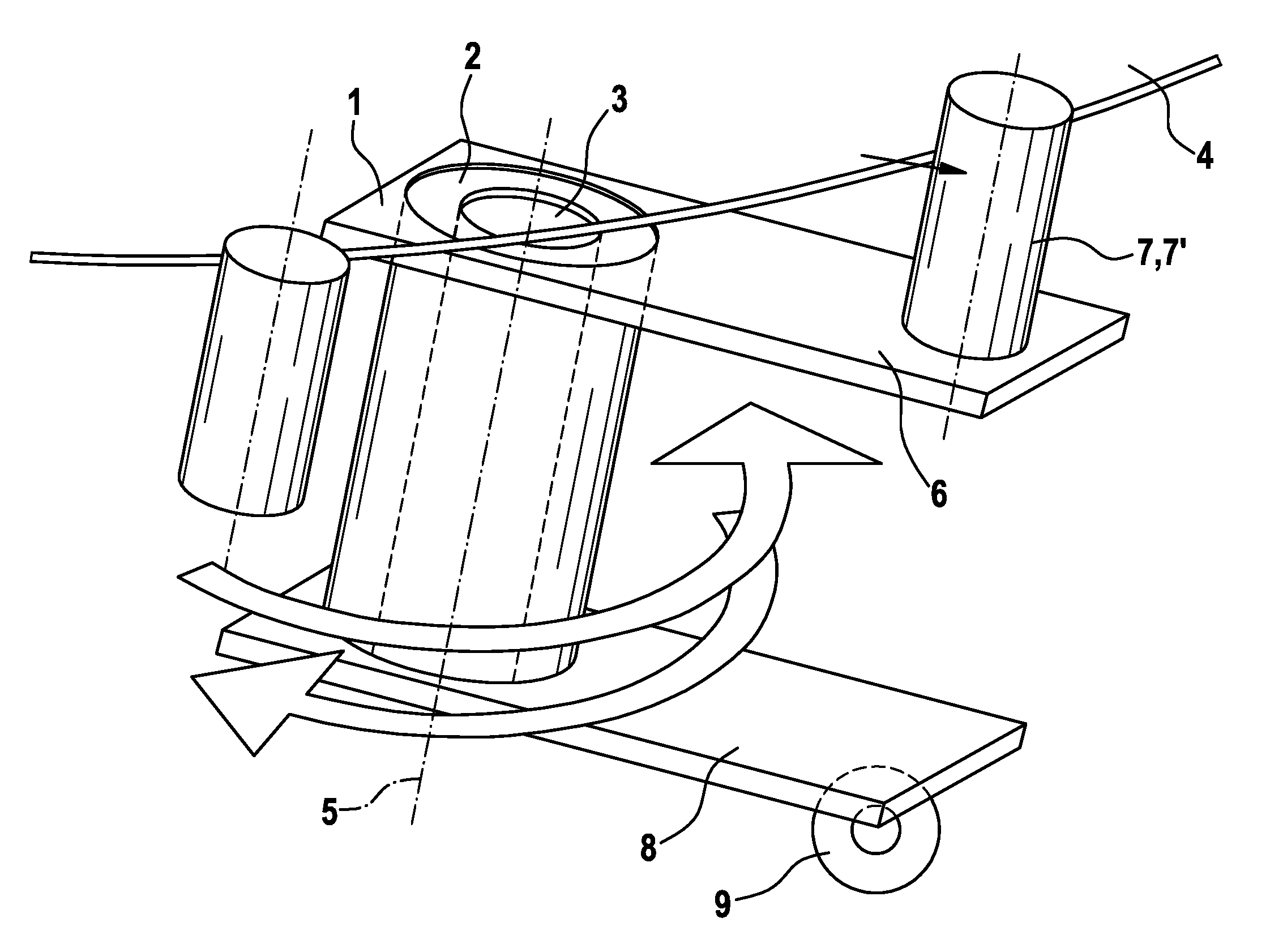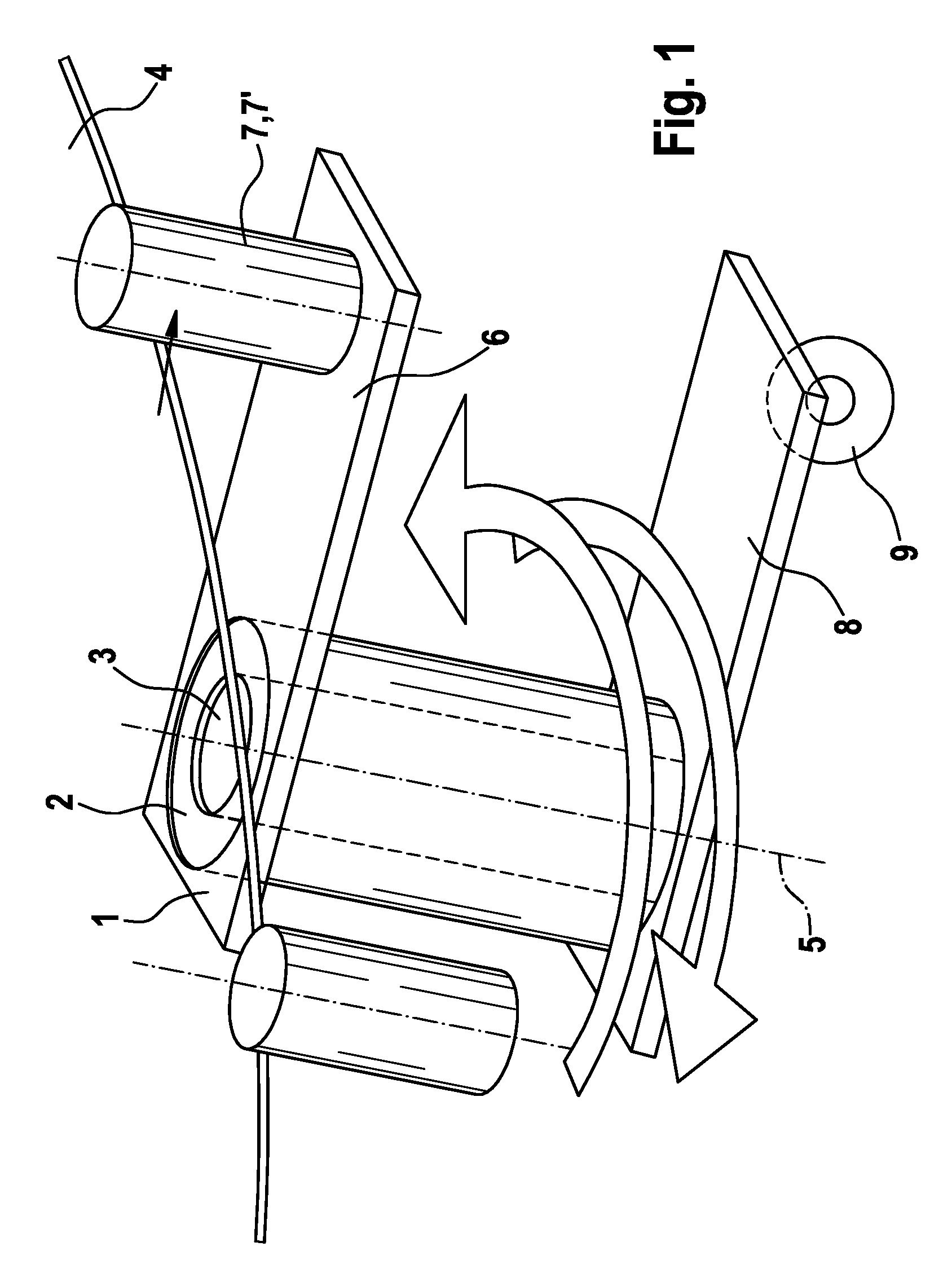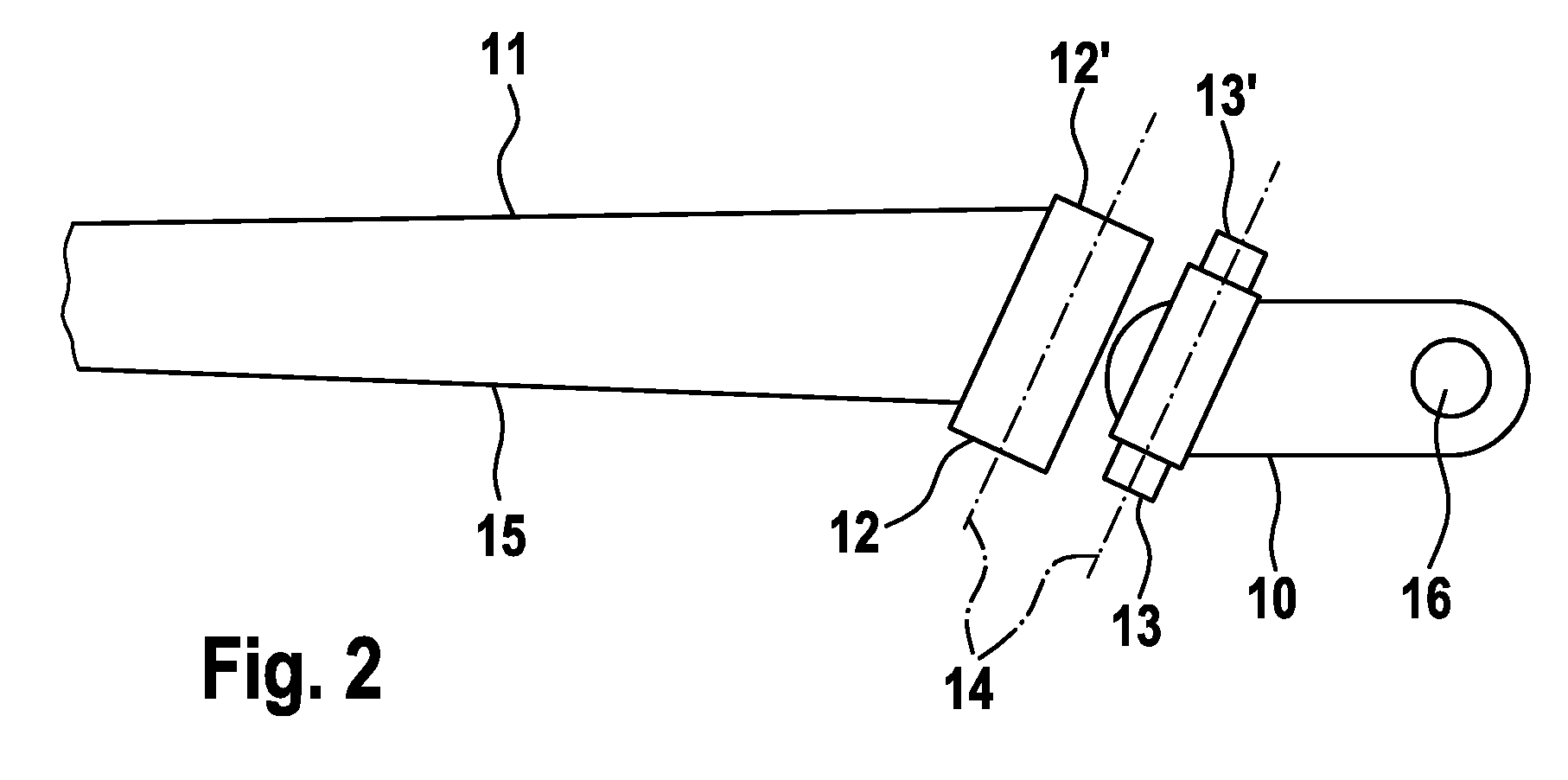Wiper System for Front Windscreens of Motor Vehicles
a technology for front windscreens and motor vehicles, applied in the field of windshield wipers, can solve the problems of inability to pierce the front windshield, which is required for this, and is no longer permissible in many modern glass materials, and has adverse effects on surface stability and fracturing behavior
- Summary
- Abstract
- Description
- Claims
- Application Information
AI Technical Summary
Benefits of technology
Problems solved by technology
Method used
Image
Examples
Embodiment Construction
[0028]FIG. 1 shows a schematic illustration of a bearing part 1 according to the invention. A bearing bushing 2 is pushed onto a bearing shaft 3 which is arranged in the vehicle interior in a positionally fixed manner below a front windshield 4 which is designed as a wraparound windshield. The bearing shaft 3 determines the position of the axis 5 about which the bearing part 1 can be pivoted. The bearing part 1 furthermore comprises a support 6 which is connected fixedly to the bearing bushing and on which a bolt-shaped bearing shaft 7 is fastened as the fastening means at a fixed distance from the bearing bushing 2. Said bearing shaft 7 serves to receive a fastening part which can be connected at this point to the bearing part 1 in a manner secure against rotation. The bearing bushing 2 ensures a pivotable arrangement of the bearing part 1 on the bearing shaft 3.
[0029]A spatial separation of the pivot axis 5, about which the bearing part and therefore the wiper arrangement is pivot...
PUM
 Login to View More
Login to View More Abstract
Description
Claims
Application Information
 Login to View More
Login to View More - R&D
- Intellectual Property
- Life Sciences
- Materials
- Tech Scout
- Unparalleled Data Quality
- Higher Quality Content
- 60% Fewer Hallucinations
Browse by: Latest US Patents, China's latest patents, Technical Efficacy Thesaurus, Application Domain, Technology Topic, Popular Technical Reports.
© 2025 PatSnap. All rights reserved.Legal|Privacy policy|Modern Slavery Act Transparency Statement|Sitemap|About US| Contact US: help@patsnap.com



